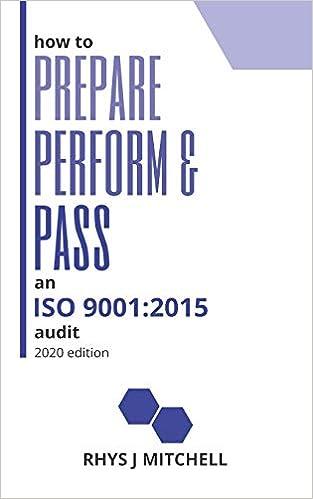Answered step by step
Verified Expert Solution
Question
1 Approved Answer
Weighted Average Cost Method with Perpetual Inventory The beginning inventory for Midnight Supplies and data on purchases and sales for a three-month period are as
Weighted Average Cost Method with Perpetual Inventory
The beginning inventory for Midnight Supplies and data on purchases and sales for a three-month period are as follows:
Date Transaction Number
of Units Per Unit Total
Jan. 1 Inventory 7,500 $79.00 $592,500
10 Purchase 22,500 89.00 2,002,500
28 Sale 11,250 158.00 1,777,500
30 Sale 3,750 158.00 592,500
Feb. 5 Sale 1,500 158.00 237,000
10 Purchase 54,000 91.50 4,941,000
16 Sale 27,000 168.00 4,536,000
28 Sale 25,500 168.00 4,284,000
Mar. 5 Purchase 45,000 93.50 4,207,500
14 Sale 30,000 168.00 5,040,000
25 Purchase 7,500 94.00 705,000
30 Sale 26,250 168.00 4,410,000
Required:
1. Record the inventory, purchases, and cost of goods sold data in a perpetual inventory record similar to the one illustrated in Exhibit 5, using the weighted average cost method. Round unit cost to two decimal places, if necessary. Round all total cost amounts to the nearest dollar.
Midnight Supplies
Schedule of Cost of Goods Sold
Weighted Average Cost Method
For the Three Months Ended March 31
Purchases Cost of Goods Sold Inventory
Date Quantity Unit Cost Total Cost Quantity Unit Cost Total Cost Quantity Unit Cost Total Cost
Jan. 1 fill in the blank 1 $fill in the blank 2 $fill in the blank 3
Jan. 10 fill in the blank 4 $fill in the blank 5 $fill in the blank 6 fill in the blank 7 fill in the blank 8 fill in the blank 9
Jan. 28 fill in the blank 10 $fill in the blank 11 $fill in the blank 12 fill in the blank 13 fill in the blank 14 fill in the blank 15
Jan. 30 fill in the blank 16 fill in the blank 17 fill in the blank 18 fill in the blank 19 fill in the blank 20 fill in the blank 21
Feb. 5 fill in the blank 22 fill in the blank 23 fill in the blank 24 fill in the blank 25 fill in the blank 26 fill in the blank 27
Feb. 10 fill in the blank 28 fill in the blank 29 fill in the blank 30 fill in the blank 31 fill in the blank 32 fill in the blank 33
Feb. 16 fill in the blank 34 fill in the blank 35 fill in the blank 36 fill in the blank 37 fill in the blank 38 fill in the blank 39
Feb. 28 fill in the blank 40 fill in the blank 41 fill in the blank 42 fill in the blank 43 fill in the blank 44 fill in the blank 45
Mar. 5 fill in the blank 46 fill in the blank 47 fill in the blank 48 fill in the blank 49 fill in the blank 50 fill in the blank 51
Mar. 14 fill in the blank 52 fill in the blank 53 fill in the blank 54 fill in the blank 55 fill in the blank 56 fill in the blank 57
Mar. 25 fill in the blank 58 fill in the blank 59 fill in the blank 60 fill in the blank 61 fill in the blank 62 fill in the blank 63
Mar. 30 fill in the blank 64 fill in the blank 65 fill in the blank 66 fill in the blank 67 fill in the blank 68 fill in the blank 69
Mar. 31 Balances $fill in the blank 70 $fill in the blank 71
2. Determine the total sales, the total cost of goods sold, and the gross profit from sales for the period.
Total sales $fill in the blank 72
Total cost of goods sold $fill in the blank 73
Gross profit $fill in the blank 74
3. Determine the ending inventory cost as of March 31.
$fill in the blank 75
Step by Step Solution
There are 3 Steps involved in it
Step: 1

Get Instant Access to Expert-Tailored Solutions
See step-by-step solutions with expert insights and AI powered tools for academic success
Step: 2

Step: 3

Ace Your Homework with AI
Get the answers you need in no time with our AI-driven, step-by-step assistance
Get Started


